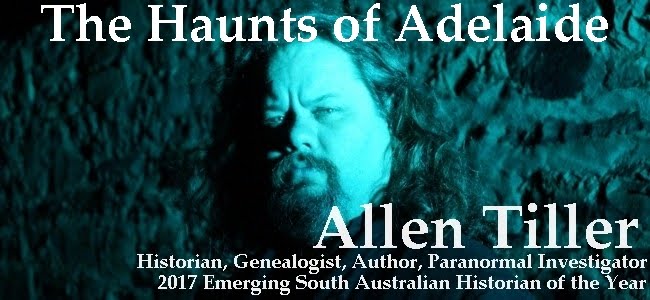In 1931, Ivan White awoke to the horrifying sounds of screams from his neighbour's house on Brighton Road, Helmsdale. He jumped out of bed and ran across to the bungalow. Looking through the window, to his horror, he saw his neighbour, Stanley Jones, bashing his wife in the head with a hammer...
Stanley Jones was married to Gertrude, and together they lived with their 18-year-old daughter Marjorie and a 35-year-old female border by the name of Ms Sullivan.
 Stanley owned a Billiard Saloon Hall in Glenelg that had always been reasonably rewarding financially, but in recent times had become somewhat of a strain on his hip pocket.
Stanley owned a Billiard Saloon Hall in Glenelg that had always been reasonably rewarding financially, but in recent times had become somewhat of a strain on his hip pocket.On the night in question, Mr Jones came home from work and sat down to dinner with his wife, daughter and border. The foursome ate, and afterwards, Ms Sullivan and Marjorie excused themselves and returned to their rooms.
Ms Sullivan, later in her police statement, said after she had left the dining room, and returned to her room, Mr and Mrs Jones had sat at the table engrossed in amicable conversation.
At some point the same evening, after saying goodnight to his wife, Stanley began to write a note explaining that he was sorry for all the trouble he had caused and that the “The Billiard Saloon was the cause of it all”.
At about 2:45am, Stanley went into his daughter Marjorie's room and slit her throat with a razor. Marjorie couldn’t scream, but she managed to get up and make her way to her mother's room.
As she entered her mother's room, Stanley, her father, struck Majorie in the back of the head with a hammer.
Marjorie fell to the floor at the foot of her mother's bed.
Gertrude began to scream, and as she did, Stanley came at her with the hammer, swinging wildly At the same time he also slashed at her with a cut-throat razor.
In another part of the house, Ms Sullivan had been awoken by the screams. Realising something terrible was happening in the house, she jumped out through a window to escape and ran into neighbour Ivan White as he crossed the street to see what was going on.
Looking through the window at the horrors before him, Ivan tapped on the window. Stanley turned and looked him in the eye, with a savage expression on his face, and turned back to beating his wife around the head with the hammer.
Mr White rushed down the street to the nearest telephone box and called the police, who arrived within in five minutes.
The police entered the house to find Marjorie was still alive, but in a very bad way, they followed a trail of blood through to the rear of the house and into the backyard where they found Stanley, who had taken the razor to himself and slit his throat from ear to ear. He was still alive.
In the brief amount of time it took for medical help to arrive, both Majorie and Stanley died from their wounds...




































,+Friday+17+June+1898,+page+3+tiger.jpg)





